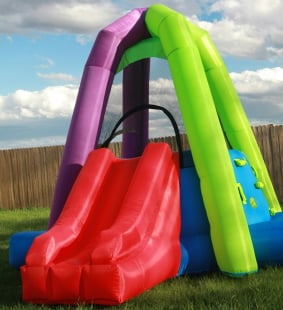
Inflatable bouncers
4 December 2015
Inflatable bouncers are terrific activity structures for children. They come in all shapes and sizes, from small ones in the backyard to gigantic ones seen in amusement parks and fairs.
Over the past ten years, the MCH Trauma Centre has seen 214 children and adolescents who have sustained injuries on inflatable bouncers. Forty-one percent of these children required admission or medical follow-up. Common injuries include elbow injuries and long bone fractures.
Common causes of injuries on inflatable bouncers are:
- Collision of one child with another;
- Child falling out of the bouncer onto a hard object or surface;
- Twisting motion to the child’s leg;
- Presence of children of different weights and ages in the bouncers at the same time.
In most cases, there was no adult supervision.
Follow these recommendations to help prevent injuries on inflatable bouncers:
Make sure to follow the manufacturer’s recommendations for installation of the inflatable bouncer.
- Inflatable bouncers should not be used in the presence of high winds.
-
The bouncers must be well secured to the ground and away from hazardous objects.
-
Soft matting should cover hard surfaces around the open sides of the inflatable bouncer.
-
Provide constant adult supervision. In public setting, make sure trained personnel are available to set up, operate and supervise equipment.
-
Restrict the number of children playing on the bouncers to the manufactures recommendations.
-
Group children together and use a rotation system for children of different ages and sizes.
-
Check and make sure to follow the age limits recommended by the manufacturer for each inflatable bouncer.
- Children playing on the bouncers should remove footwear and any jewelry.
- Children should not bring any hard or sharp objects on the bouncers.
- Children should never eat or drink while on the bouncer.
Reviewed by Trauma specialists at the Montreal Children’s Hospital.
Last updated: July 2013, December 2015
This page needs an update? Report it here!
